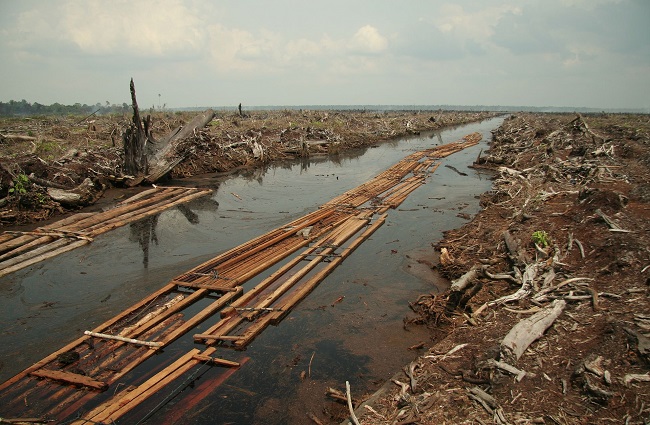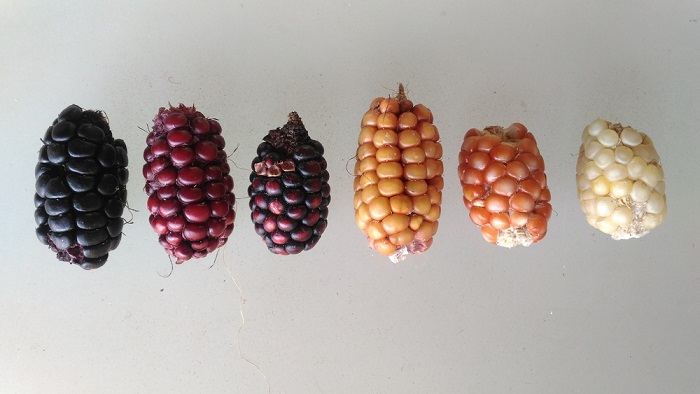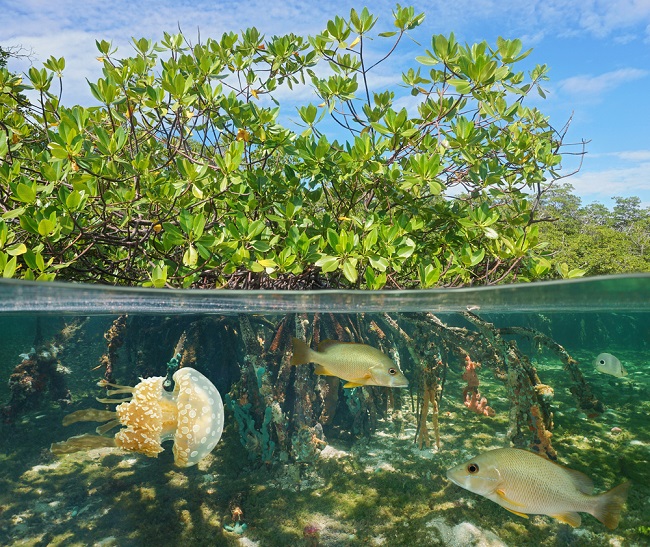Definition
Biodiversity is a term which describes every living organism within a single ecosystem or habitat, including numbers and diversity of species and all environmental aspects such as temperature, oxygen and carbon dioxide levels and climate. Biodiversity can be measured globally or in smaller settings, such as ponds.
Why is Biodiversity Important?
Without biodiversity, the health of the planet is at stake. Every single species has a role to play, although some – like viruses and disease-carrying mosquitoes – are considered to be damaging to the well-being of humans and other organisms and steps are being taken to eradicate them.
A healthy ecosystem has a rich level of biodiversity. The less inhabitable an ecosystem, the less life it can support. For example, a single organism ecosystem was recently discovered deep in a South African gold mine, where only one type of bacteria – Desulforudis audaxviator – is able to survive. Should something drastic happen to affect the health of this bacteria and it becomes extinct, there is no other organism to take advantage of this inhospitable environment. In other terrestrial, aquatic or marine environments, a lack of biodiversity of plant life (producers) means the numbers of consumers are limited.
From the ground up, or from the ocean floor up, biodiversity increases soil formation, nutrient storage, energy storage, recycling, and the breaking down of toxins and pollutants. Rich biodiversity will speed the recovery of the environment after a natural disaster. Just days after a savannah fire, new plant life springs up from those species which allow their seeds to be blown by the wind, or from those whose seeds can withstand high temperatures.

Biodiversity also has a role to play in the stability of the ecosystem and global climate. Deforestation removes trees responsible for the conversion of carbon dioxide into oxygen. This increase in carbon dioxide levels in the air is partially (but significantly) responsible for global warming. Deforestation also leads to soil erosion where other species of plant suffer, with the forming of desert-like areas as a result. The domino effect of this means less food for herbivores (primary consumers) and a consequent reduction in populations due to competition. And with fewer herbivores, one can expect reduced populations of omnivores and carnivores. As every organism has a role to play in its ecosystem, the act of deforestation without (at minimum) replanting lost mature trees, can be catastrophic both locally and globally.

Biodiversity Examples
Scientists have named three different levels of biodiversity: genetic diversity, species diversity, and ecosystem diversity. Together, they form a set of data that can describe the biodiversity of an area of land, freshwater or sea. The area can be large or small. We can look at the ecological biodiversity of Mississippi. Or of China. Or the Great Barrier Reef. On a smaller scale, we can describe the biodiversity of a local forest, park or pond. One might also look at the biodiversity of the human gut, or of a teaspoon of soil. These are all ecological habitats or ecosystems in which biodiversity can be measured.
Ecological biodiversity is measured by looking at its three levels of genetic, species and ecosystem diversity.
Genetic Diversity
Genetic diversity refers to the differences in the genetic make-up of a distinct species and to the genetic variations within a single species. It concerns DNA (or RNA in some viruses) sequences. Humans, for example, have different eye and skin colors, hair textures, propensity for disease, reactions to pollutants, heights, hormone levels and so on. We are the same species but have genetic variations which make us diverse. This means that if one individual dies when stung by a bee, others will not and are able to carry on to ensure the success of the species.
Plants of the same species can diversify to be able to live in alternative habitats. Mangrove trees – a diverse group of around eighty different species – have diversified to successfully survive and reproduce in salt water. This change was due to genetic mutations which allowed them to move from aquatic into marine ecosystems, and so increase the biodiversity of a different region and ensure the survival of the species. As with humans, genetic diversity in other organisms can affect any aspect of that organism’s make up. From size to color, to diet, to function, and everything in between.

Species Diversity
Species diversity relates to numbers and spread – how many different species live in an ecosystem and how are they distributed? When considering only the number of different species within an ecosystem we then talk of species richness. Species richness only considers the number of different species in an ecosystem, not their distribution.
There are approximately 391,000 different species of plant on the planet, although some are at risk of becoming extinct and many have not yet been discovered. Obviously, speaking of the distribution of every one of these plant species would take a long time. Unless as part of scientific research, global species diversity is usually described in the terms of species richness – how many species there are – although the terms species diversity and species richness are not synonyms of one another.
The South African gold mine mentioned earlier on has a species diversity of one which is (therefore) equally distributed. In the soil, the greatest biomass is composed of microorganisms, where fungi are by far the most common.

Ecosystem Diversity
The major habitat types from which all other smaller ecosystems derive are called terrestrial, marine and aquatic ecosystems. These three examples of ecosystem diversity contain further examples as subgroups. The marine ecosystem includes subgroups known as open marine, ocean floor, coral reef, estuary, saltwater wetland estuary, and mangrove systems. Terrestrial heads six subgroups: tundra, grasslands, taiga, deciduous forest, rainforest, and desert. The smallest ecosystem of the three main groups, the aquatic ecosystem, can be further split into estuaries, wetlands, ponds, lakes, and rivers.
However small or large a particular area of the planet, the number of ecosystems that can be found within it define its ecosystem diversity. Deserts are, on the whole, the least diverse terrestrial ecosystem but may be split into sand, rock, bush and even oasis with its own group of mini-ecosystems (aquatic, date palm, a small area of wetland at the water’s edge). Tropical rainforests are the most diverse of the terrestrial ecosystems, but many of these are biodiversity hotspots. This means that an ecosystem must contain at least 1,500 species of plants found nowhere else on earth (endemic” species) but have also lost at least 70% of its primary native vegetation. Unfortunately, there are over 36 biodiversity hotspots at this moment in time, some of which have undergone up to 95% of native vegitation loss. There is an overwhelming need for conservation in the modern world.
Within these diverse ecosystems, one must also consider trophic levels, how species interact with that specific ecosystem, climate, pollution or human impact and every other variable that is part of that particular habitat.
Threats to Biodiversity
The greatest threat leading to the loss of biodiversity is the human race. As our population grows together with our need for food, water, industry, transportation, and home comforts, it takes over natural ecosystems and replaces them with unnatural ones. Even in these, other organisms can adapt and successfully reproduce, but the levels of biodiversity as compared to the replaced environment are significantly lower.
The Threat of Urbanization
The city of London, for example, is becoming home to increasingly more wildlife who have adapted to live in an urban environment. Fox populations are large, feeding on rats, mice, and garbage. Plant life is not enough to support large populations of herbivores and in this unnatural ecosystem are in a group of their own. Instead of having a group of producers (plants) feeding primary consumers (herbivores) who feed secondary, tertiary and quaternary consumers (omnivores and carnivores), it is often human food waste that becomes the urban producer. Humans import their food from other agricultural ecosystems.

The Threat of Pollution
We have already discussed the dramatic effects of deforestation upon the climate and biodiversity. Global warming and pollution are the largest abiotic threats to biodiversity, but the cause of these abiotic threats is biotic – us. Heavy metals and plastics in the seas not only reduce the numbers of a species but can render an area completely uninhabitable. The industrial revolution of the mid-eighteenth to mid-nineteenth century in Europe turned skies black with smoke and poisoned rivers and plant life, killing consumers, too. Today, the fine dust from car exhausts largely replaces coal.
The Threat of Climate Change
Higher temperatures through climate change mean increased biodiversity in some regions (mangrove trees are moving to areas previously too cold, wine-making is taking off in areas previously unsuitable for growing grapes). In other regions, the higher temperatures cause destruction. In the winter months, for example, caribou scrape through the ice to reach plant life preserved in the equivalent of a natural refrigerator. As global temperatures rise, this extra food source decomposes and the caribou has no winter food source unless it moves much further north. Higher Arctic springtime temperatures also bring swarms of flying insects to the icy north much earlier than usual. Caribou are so distressed by these biting flies that they will even change their migrating paths, meaning they also have to look for new sources of food instead of relying on familiar feeding grounds. In escaping from these flies, caribou also spend less time feeding. Furthermore, they also have to compete for the meager plant life when other herbivores, previously kept away by the cold, arrive and thrive through adaptive radiation.

The Threat of Invasive Species
Yet there are still many threats to biodiversity that may not (always) be the fault of the human being. The proliferation of an invasive species, for example, may be the result of an opportunistic move into another species’ territory. Still, human transportation systems are primarily to blame for the introduction of pests into other countries via air and sea. Consider the American gray squirrel decimating red squirrel populations in England and the introduction of the Colorado beetle in Europe which caused countless potato crops to fail, for example.
The Threat of Overexploitation
Overexploitation is another threat to biodiversity, again a largely human threat. Overfishing and overharvesting either remove competition for other species causes a huge shift in the stability of species richness and diversity. By removing too many of one species of fish, fishers allow other species to take over, perhaps upsetting the delicate balance between producer and consumer. Alternatively, fishers remove too many fish of a wide range of species, not immediately upsetting the balance of fish species but causing a drop in population and lower reproduction rates that allows certain types of plankton or algae to take over. The latter can cover large areas of fresh or salt water and remove the oxygen, causing a dead zone where nothing except anaerobic bacteria can survive. In agriculture, the overharvesting of crops leads to a lack of nutrients in the soil, where farmers then add nitrogen-containing fertilizers to make up for this loss. Nitrogen contributes greatly to global warming and climate change. A vicious circle of action and effect which slowly reduces biodiversity on first a local and finally a global scale.
Benefits of Biodiversity
Species can have instrumental or intrinsic (inherent) value. When of use to humans, either as a pleasing aspect (a pet dog) or a useful one (willow bark as a pain killer), they are instrumental. If a species has other value beyond its use to the human race, it has intrinsic value. This would include the fact that a species is part of the world’s natural history. New discussions regarding the ethics of human effects upon biodiversity sway towards agreeing that every species has intrinsic value.
Without biodiversity, ecosystems would produce less. If one species of plant type produces one type of flower for one species bee, who produces honey for one species of honey badger who provides food for one cheetah, the balance is much too delicate. If a sudden heavy downpour kills most of the bees and drowns the flowers, the entire food chain is lost. The higher the number of species that can be supported in an ecosystem, the higher the rate of survival for every organism inside that ecosystem. Including the human species.
Thanks to the planet’s huge biodiversity we have been able to produce medicines for the sick, grow new types of crops in areas which used to suffer regular famine, enjoy the colors and scents of a fantastic range of flowers, eat a varied diet with no need for deficiencies, and explore the splendor of the world’s different habitats as we travel. Biodiversity is not only necessary for survival, but it is also extremely beautiful.

Quiz
